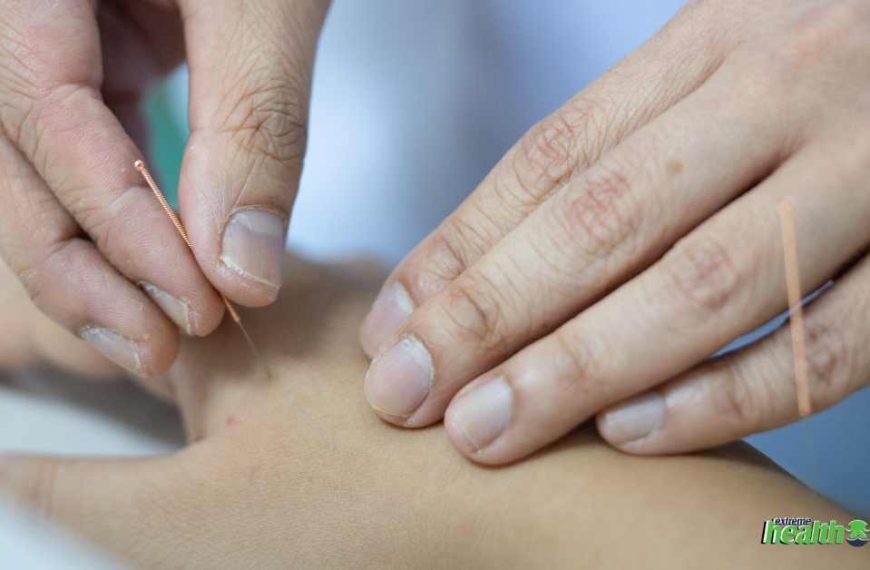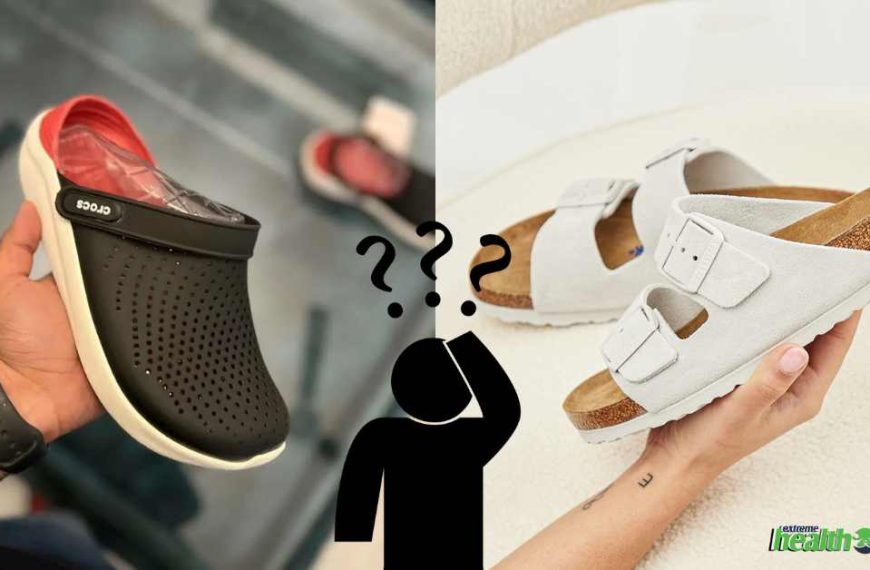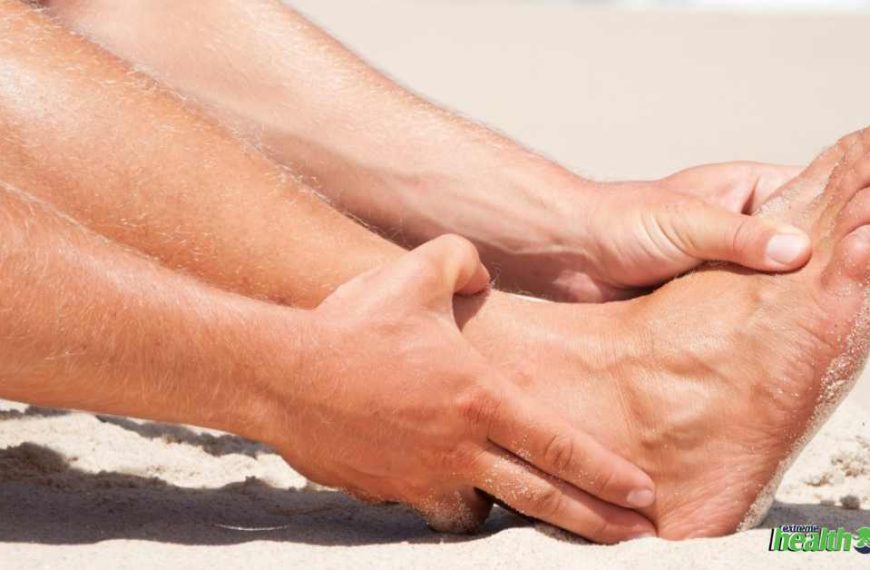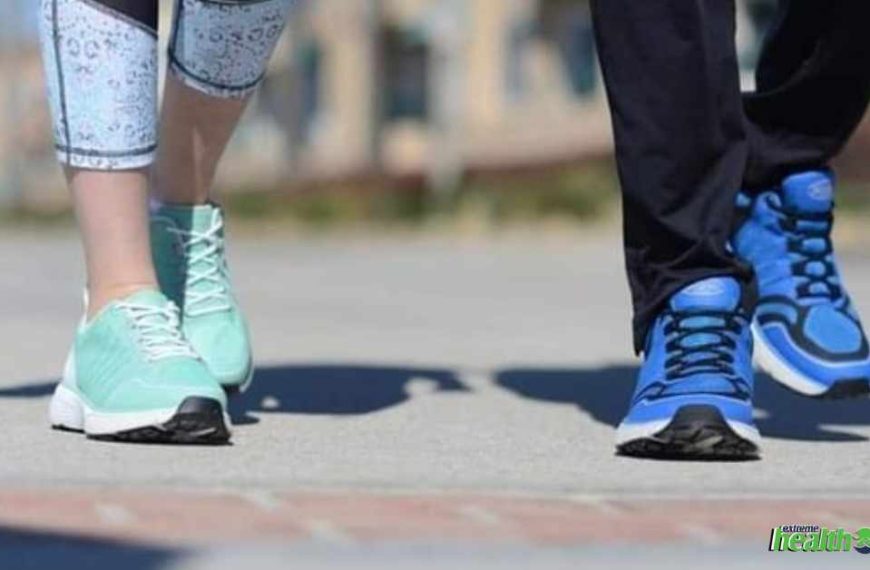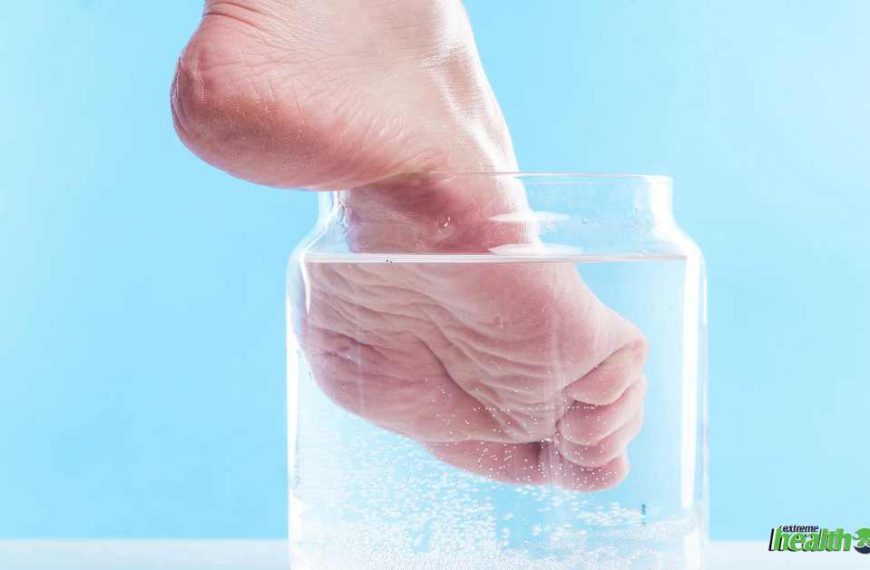Last Updated on November, 2024
A broken leg? You might need to use a crutch until it’s healed. A sprained arm? A bandage for it. Every ailment that affects us needs to be tackled differently.
And what about neuropathy in feet? Diabetic socks come into play. Let’s see what it is and how these specially designed-socks would help you with it.
Quick Summary
Diabetic socks are designed to provide relief and comfort to people with diabetes who may experience foot problems such as numbness, irritation, injuries, and decreased sensation due to desensitized nervous and circulatory systems caused by elevated blood sugar levels.
Diabetic socks have unique features such as being seamless, padded, non-constricting, moisture-wicking, antimicrobial and made of soft yarn to protect and prevent further foot issues for people with diabetes.
Diabetic socks are different from compression socks as they are designed to help diabetic patients suffering from nerve damage caused by neuropathy. Compression socks are for anyone to alleviate pain and promote blood flow. But still, diabetic socks have a seamless build to ensure that there are no blisters or injuries caused internally by friction.
Quick Navigation
- What are Diabetic Socks?
- Difference Between Diabetic Socks Compared to Normal Socks
- Seamless
- Padded Soles
- Non-Constricting
- Moisture-Wicking
- Antimicrobial
- Soft Yarn
- Benefits of Diabetic Socks
- Diabetic vs Compression Socks
- Proper Way to Maintain Diabetic Socks
- Conclusion
- FAQs
- How Long Should You Wear Diabetic Socks?
- Can a Normal Person Wear Diabetic Socks?
- Was this article helpful?
What are Diabetic Socks?
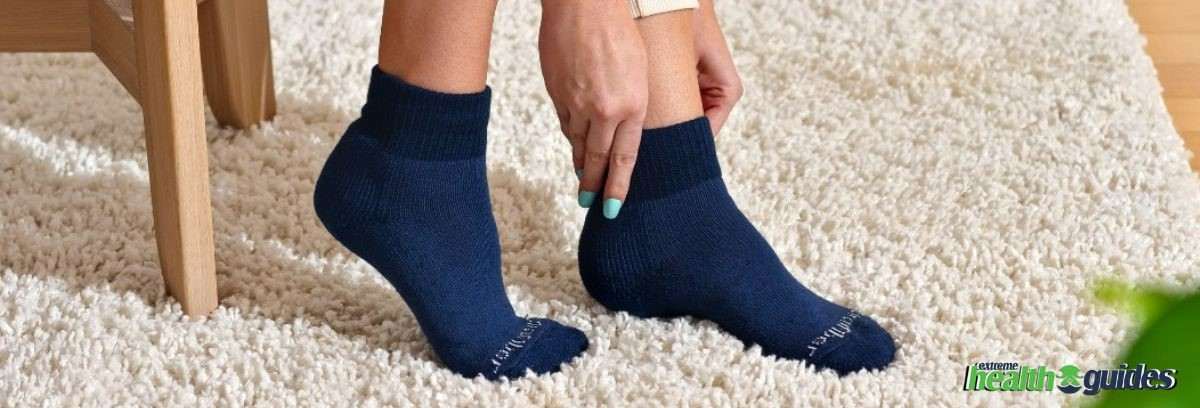
Most diabetic socks are created mainly to provide relief to your feet. Desensitized nervous and circulatory systems caused by elevated blood sugar levels are the reason for foot problems. Numbness, irritation, injuries, and decreased sensation are some of the foot issues they face.
When they lose sensation in their feet, especially the soles, they cannot detect any injury and even have slow healing (Therefore, unlike you and I, these socks may even be the reason that stopped it from leading to amputation or worse).
These socks will keep you safe from foot injury, keep them dry, improve blood circulation, and ensure no further problems. As diabetes affect circulation in the feet, adding on a pair of diabetic shoes along with the socks would provide even better comfort.
Difference Between Diabetic Socks Compared to Normal Socks
Socks are a norm when it comes to our day-to-day activities. And this may extend over to other situations where an added boost is needed, like wearing compression socks for athletes and players to promote blood flow and protect their feet.
Compared to the usual socks that we wear in day-to-day life, diabetic socks have some features that are unique to them. Wearing diabetic socks is mainly to help nerve damage caused by neuropathy, which leads to numbness and other pain.
Seamless
The feet of people with diabetes are prone to blisters and cuts quickly. This is usually the case with regular socks when your feet rub against the seams. Nothing is worse than an injury on your foot for a diabetic individual.
Diabetic socks are designed to provide comfort on the inside while having any and all stitches whatsoever on the outside.
Padded Soles
The soles of these socks are cushioned to give safety from foot injuries and provide comfort.
Usually, there is extra padding on the soles, but sometimes around your foot.
This may vary accordingly, allowing you to choose between the ones with all-around padding or the ones with extra padding, depending on your motive.
They protect whether you play any sport, stand for long periods, or run.
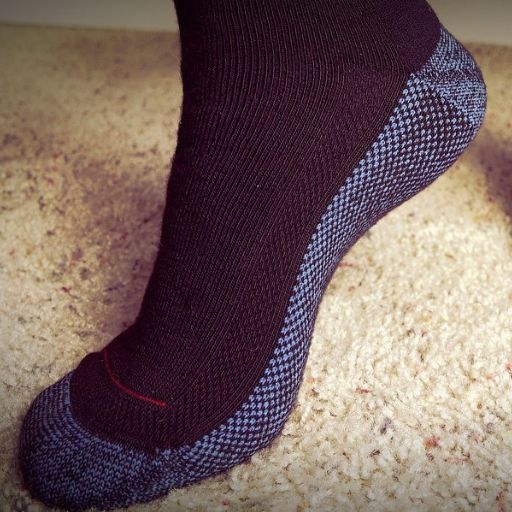
Non-Constricting
The usual socks have a tighter binding around your calves which restrict blood flow due to poor circulation of diabetic patients (there is nothing to worry about if you do not have this type of disease).
These diabetic socks are for stretching and making you feel like you are not constricted. They are loose enough to assist with easy blood flow, even when wearing for long periods.
Moisture-Wicking
Another sweet feature of these diabetic socks is that they keep your feet dry, warm and odor free all day long. With the increased risk of fungal infections that may arise with sweaty feet, they are made with soft materials like nylon or other acrylic fibers.
This is made using advanced technology to keep moisture out and dry, making it highly unlikely to have any infections. It makes me wonder if this would be better to have had on those long school days.
Antimicrobial
Antimicrobial technology is infused in making these socks to help prevent the growth of fungus and bacteria due to sweat. The material helps in this aspect, but the yarn is infused with materials like copper that have antimicrobial properties added on to it.
This will prevent the wearer from being infected and keep it odor-free.
Soft Yarn
The usual cotton materials don’t work for people with diabetes because friction and rubbing may lead to foot ulcer or blister.
Therefore, these diabetic socks are made of fabric like wool or similar materials that are soft and smooth against your feet.
Certain materials like wool and bamboo also have antimicrobial properties, adding value to the socks to keep your feet warm and also free from fungal infections.
Benefits of Diabetic Socks
As a result of the features mentioned earlier, a diabetic sock they have quite many benefits;
- The yarn it’s made of is soft and smooth to provide comfort.
- Does not constrict. Breathable and light enough to assist blood flow.
- Soft and seamless stitch to ensure that is no unnecessary friction that would lead to blisters.
- It keeps your feet dry and odor free all day long.
- Protection from fungal infection due to the antimicrobial technology used in it.
- The material keeps your feet comfortably adjusting to cold and hot conditions.
- Some diabetic socks have built-in smart tech sensors to alert you if there is any change in your foot’s condition through an app.
- Padded soles protect the feet from pressure and padding in places like the toe, heel or pressure points, depending on the activities that you engage in.
- Protects sensitive parts from going numb or injuries.
Diabetic vs Compression Socks

Diabetic socks are designed to help diabetic patients suffering from nerve damage caused by neuropathy, whereas compression socks are for anyone (except neuropathy patients because it would affect them severely).
There are a few similarities between the two socks, along with differences;
- Both compression socks and diabetic socks are mainly made to alleviate pain. Still, the difference is that compression exerts pressure to reduce muscle pain, while diabetic socks loosen to promote blood circulation.
- Both socks ensure that the wearer’s feet are not injured externally, but diabetic socks have a seamless build to ensure that there are no blisters or injuries caused internally by friction. This is because diabetic patients have a higher risk of injuries as such.
- While compression socks are made from any material, diabetic socks are exclusively made with moisture-wicking materials like wool or bamboo. This allows your feet to remain dry, which is far better than the alternatives.
- Unlike regular socks, diabetic socks are made of soft yarns, enabling them to provide the least possible friction to your feet due to their softness.
- The diabetic socks are also antimicrobial due to the technology used, which adds to the moisture-wicking feature available in both. This protects your feet from fungal infections.
- Athletes and players mainly use compression socks to assist and improve blood flow, whereas diabetic socks too are focused on it but, mainly on people affected by neuropathy.
- The padded soles in diabetic socks protect them from soreness and injury. It can vary according to the wearer’s needs, Like padding on toes or heels, depending on whether they spend a lot of time standing or playing a game of tennis, for example.
Read the full guide on the “difference between Compression Socks & Diabetic Socks” HERE.
Proper Way to Maintain Diabetic Socks
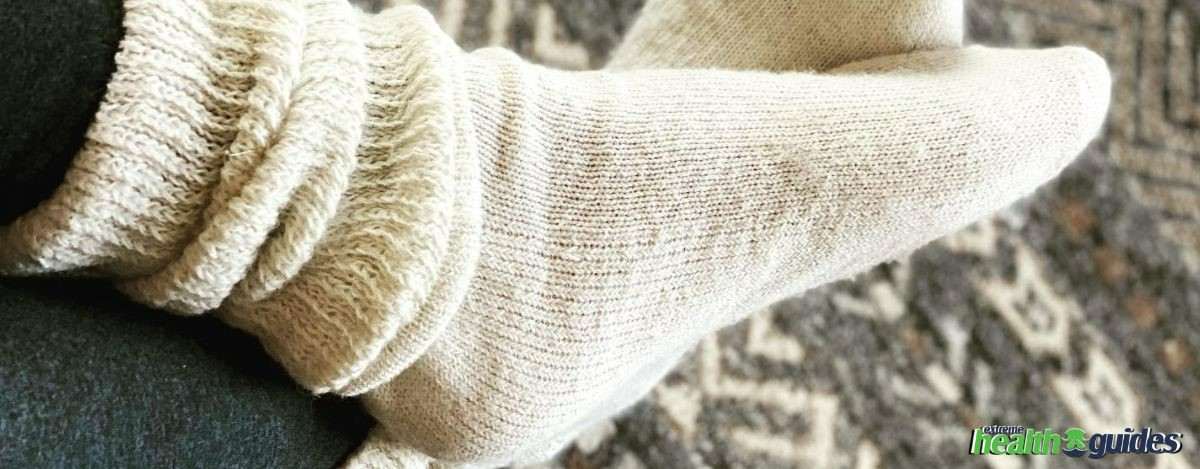
These diabetic socks can be used for up to six months with daily use with proper care. Unlike the socks we wear only when needed, people with neuropathy must wear these socks to safeguard their feet regularly. Frequently wearing diabetic socks raises the frequent need for washing.
To wash them:
- Please put them in a mesh laundry bag in a washing machine.
- Dry them in low heat or air dry.
- Use a comb to remove fabric pills afterward.
- Dispose of and replace them with a new one when there is a tear after months of use.
Conclusion
For those suffering from neuropathy, these socks go a long way to provide comfort and protection for your feet. Depending on the severity, your doctor may prescribe you to use this socks regularly or when needed.
Prevention is better than cure; these diabetic socks will help keep your feet safe from injuries. Although it is pretty expensive compared to regular socks, they give you added benefits than them.
If you regularly feel numbness or pin-like pricking, among other symptoms, you might need to visit a doctor to sort it out. Or you can still get one for yourself if you always wear socks daily for long stretches of time. The benefits would help keep your feet safe.
FAQs
Was this article helpful?
Was this article helpful?

